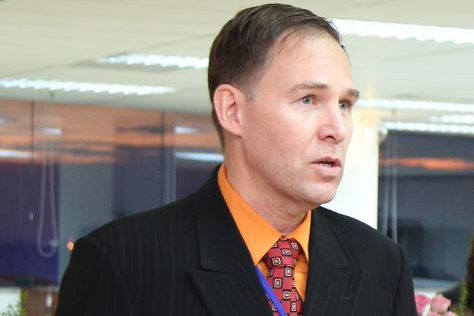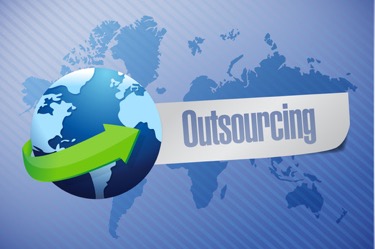Table of Contents
The Lifecycle of Outsourcing
“If I knew before, what I know now, I never would have gone down the path of hiring my own outsourced staff . . . ” . . . a quote we’ve heard a few times!
As the accounting world slowly accepts the cloud and outsourcing, Odyssey thought it was a good time to explore the various offshoring models, and give some comments on some of the pitfalls we’ve seen.
You normally find out about offshoring because either the taxi driver told you about it, your client told you about it, or for older accountants, one of your children told you about it!
But firstly, everyone knows about it. Certainly most of your clients are comfortable enough to order products internationally, and at times services internationally. And it’s likely that anyone who has grown up with the internet is very comfortable with social/financial interactions on the internet, which means younger accountants probably have the edge in this next technological earthquake, and are likely to introduce “game changing” cloud offerings to make massive changes to traditional business models.
Below are the outsourcing phases starting with obtaining additional resources through to task oriented outsourcing.
Outsourcing 101 – Hiring Additional Resources (business oriented)
In the initial stages of outsourcing you are short resources/skills and hire a worker from offshore. This may be through a freelance site (individual contractor), or it may be a worker employed by a Foreign Firm that you supervise (hiring a “seat”).
In this model you usually pay an hourly rate, or may pay a fixed rate per FTE (Full time equivalent). The FTE model is sold either on what you would pay a local employee (Aus$55,000) or what you pay in the offshoring country including a markup when employed by a foreign firm (Aus$25,000).
With this model, you are required to manage the work/tasks of the worker. This is a remotely supervised worker that you are responsible to manage.
Some things we’ve seen:
- It takes several attempts to find a good outsourcing person, then the outsourcing person moves due to personal issues, and you are back at square 1 with a new staff
- You’re not really sure what the outsourcing person is doing, though time is being charged on the clock
- You don’t have time to manage the resources, but you are still paying
- You have no knowledge of the environment where the work is being done
- You aren’t really sure what the “right” price is to pay for the service, and are worried you are paying too much, or the price might unexpectedly move.
Outsourcing Phase 2 – BO or BOT
Phase 2 involves BO (Building and Operating yourself) or BOT (Someone Else Builds/Operates then Transfers to you).
For Build/Operate, you pay for all costs, whereas for the BOT you pay for all costs plus a markup to cover the expertise of the supplier and resources deployed.
With this business model, there is a requirement to either send experienced staff over to the foreign location to train the resources, or to base experienced staff in the foreign location. There are legal and other setup costs, and ongoing administration/taxes/reporting requirements. Office leases, insurance, purchase of assets. It turns into an exercise in setting up and managing a second office in a different country, in which the culture and usually the language are different.
Some things we’ve seen:
- The outsourcing staff “freelancing” providing the same services as your office does
- Outsourcing staff “selling” information online
- The expatriates “freelancing” or setting up businesses on the side, and then taking staff out to setup a new company (usually in competition to you!)
- High turnover of outsourcing staff, or sickness/absences from work
- Requirements to setup a second office and paying above market rates for the setup/ for ongoing supplies due to lack of knowledge of market rates
- Requiring to train the outsourcing staff from scratch .. “But they are so cheap!!”
- Requiring to commit to ongoing training, or sweeteners (e.g. further education like a Masters in Commerce), including annual memberships
- Outsourcing staff not having the same motivation, and usually suffer from high turnover
- The costs spiral, and so the requirement to find revenue spirals alongside, until the business model changes to just doing your own work, to having to find other work to feed the beast that has been unleashed overseas. You spend more time managing the operation, and worrying about making it productive and profitable. You spend more time policing the staff, staff attendance, planning staff activities, staff parties . . . and the list goes on . . .
Outsourcing Phase 3 – Task Oriented
Outsourcing phase 3 involves engaging a firm to complete a “task”.
The pricing is usually set at an “hourly” rate. Alternate pricing models may involve a fixed price which is usually linked to the service offering by the customer.
In this model the outsourcing firm takes full responsibility for the task and the quality of work. The outsourcing company is responsible for every facet of running the outsourcing operation, e.g. training, hiring, firing, complying with local labour regulations, ensuring staff are motivated and remunerated according to location conditions.
The perfect model involves completely outsourcing the task and the fully completed task is returned in a completed manner to high quality, within an acceptable time frame.
Fully flexible models allow you to load up the outsourcing services provider with as much work as you have, whenever you want, and it becomes their responsibility to manage the workflow.
A good service provider will be able to give “leading edge” solutions and comments on how to improve your practice, so that you always have someone to rely upon as a resource when required.
So what’s best for me . . .
The best business model really involves a decision on what your practice is going to do in the future.
If you want to continue to do compliance work, then managing overseas compliance workers will give you a few years space until all the other accounting firms are doing the same. Your energies would be spent on extracting as much value as possible in a declining business revenue area. The compliance fees must reduce due to the impact of the cloud technologies and connectivity between systems reducing time required to complete compliance work (i.e. no rekeying of bank statements, no duplicate systems and using the same ledger as the client) and through the use of offshore workers – it’s likely many firms will reduce prices in order to gain market share.
The futurists have already put out the word that compliance is dead for accounting firms. So expending energy in the compliance area is a dead end that will only be valid for a few years, with the obvious result that this approach will reduce the recovery value of your firm in a sale.
The future is clear: Accounting firms need to move onto other value-add work. Compliance work will be done 99% overseas.
Thank you
From all of us at Odyssey we’d like to thank those who use our services, or have considered using our services.




